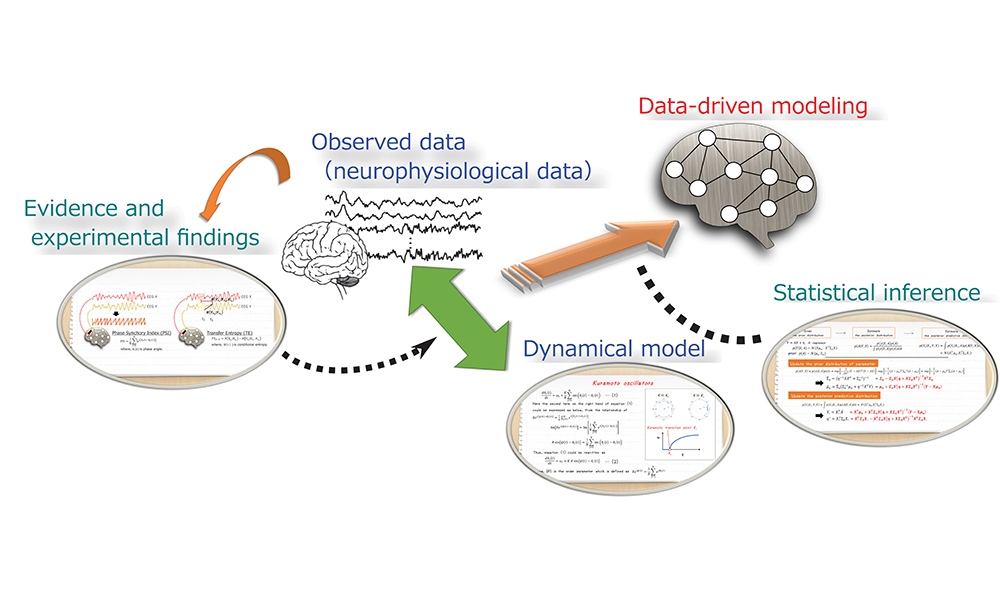Computational Neuroscience
We assume that dynamical networks, which are implemented by a variety of the nonlinear brain dynamics such as synchronous and asynchronous neural oscillations, play a key role in flexible information processing in the brain.
We aim to understand the functional role of dynamical phenomena in the brain and their computational and mechanistic roles with the following three approaches,
1. Data-driven approach to understanding brain dynamics
By using neural time-series data obtained in lab-based experiments, we uncover the mechanisms underlying information transfer between brain regions using synchrony and information theory measures such as phase synchronization index and transfer entropy.
Reference:
Song Ye, Keiichi Kitajo, Katsunori Kitano, Information-theoretic approach to detect directional information flow in EEG signals induced by TMS. Neuroscience Research, 4307, 1-9, doi: 10.1016/j.neures.2019.09.003, 2019.
2. Formulation and mathematical modeling of brain dynamics
We simulate a variety of neuronal dynamics by mathematical models. By mathematical modelling, we aim to formulate network connectivity and its transient changes to propose the mathematical model that describes the mechanistic basis of information processing in the brain.
Reference:
Kei-ichi Ueda, Yasumasa Nishiura, Keiichi Kitajo, Mathematical mechanism of state-dependent phase resetting properties of alpha rhythm in the human brain. Neuroscience Research, 4387, 1-13, doi: 10.1016/j.neures.2020.03.007, 2020.
3. Proposing model-based data analyses
We integrate experimental data and mathematical models to infer model parameters by Bayesian inference and data-assimilation techniques. By this approach, we try to elucidate the mechanisms of information processing and the functional role of phase synchronization networks in the brain in data-driven way, thereby targeting application studies as well.
